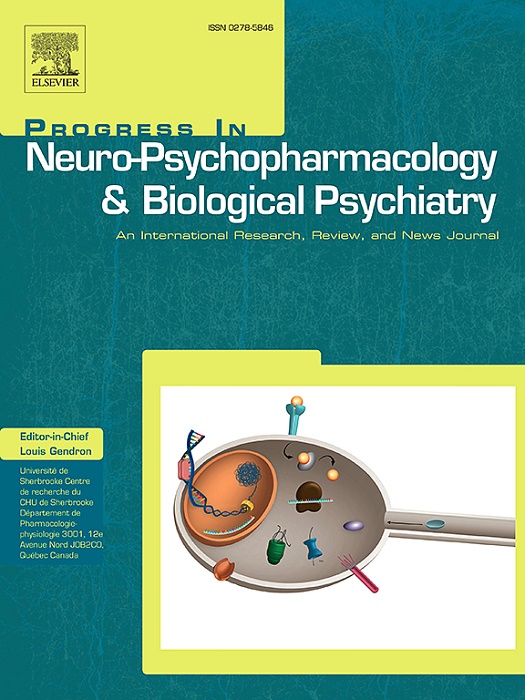Sex differences in behavioral and neural responses induced by witnessing social defeat stress during adolescence or adulthood in mice
IF 5.3
2区 医学
Q1 CLINICAL NEUROLOGY
Progress in Neuro-Psychopharmacology & Biological Psychiatry
Pub Date : 2025-03-04
DOI:10.1016/j.pnpbp.2025.111313
引用次数: 0
Abstract
Psychosocial stress can lead to emotional disorders and memory-related cognitive impairments. Evidence suggests that stress effects vary with age and sex, involving brain structures such as the medial prefrontal cortex (mPFC), amygdala, and hippocampus. This study hypothesized that witnessing social defeat stress (WSDS) during adolescence or adulthood would produce anxiety- and depression-like behaviors and cognitive deficits in adulthood, with outcomes affected by sex. We examined WSDS effects on male and female mice exposed during adolescence or adulthood, assessing: (i) social avoidance in the social interaction test, (ii) anxiety in the elevated plus-maze (EPM) and open field tests, (iii) cognition in the object recognition test, (iv) depression-like behaviors in the sucrose splash test, and (v) ΔFosB expression in neurons within the mPFC, basolateral amygdala (BLA) and dorsal hippocampus (DH). WSDS during adolescence resulted in reduced EPM open-arm exploration in both sexes and impaired novel object discrimination in males. In adulthood, WSDS reduced open-arm entries only in females and impaired novel object discrimination in both sexes. Female mice showed higher mPFC ΔFosB labeling than males, while control males exhibited higher labeling in the BLA and DH, which was not observed in WSDS mice. In conclusion, this study shows that WSDS during adolescence or adulthood induces anxiety-like behavior in both sexes, cognitive impairments in males, and sex-specific patterns of neuronal activation.
求助全文
约1分钟内获得全文
求助全文
来源期刊
CiteScore
12.00
自引率
1.80%
发文量
153
审稿时长
56 days
期刊介绍:
Progress in Neuro-Psychopharmacology & Biological Psychiatry is an international and multidisciplinary journal which aims to ensure the rapid publication of authoritative reviews and research papers dealing with experimental and clinical aspects of neuro-psychopharmacology and biological psychiatry. Issues of the journal are regularly devoted wholly in or in part to a topical subject.
Progress in Neuro-Psychopharmacology & Biological Psychiatry does not publish work on the actions of biological extracts unless the pharmacological active molecular substrate and/or specific receptor binding properties of the extract compounds are elucidated.

 求助内容:
求助内容: 应助结果提醒方式:
应助结果提醒方式:


